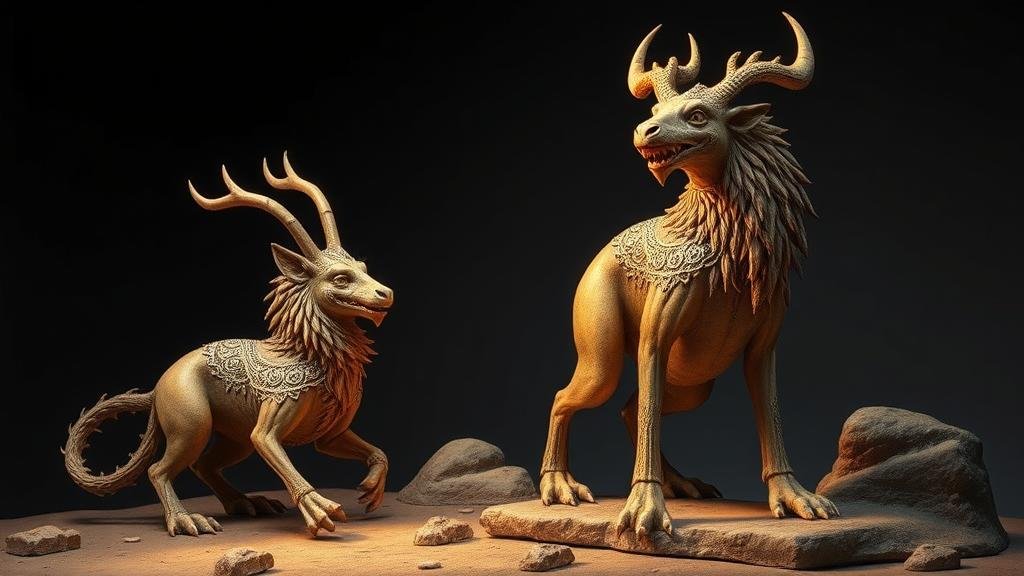The Use of Sacred Animals or Creatures as Deterrents in Treasure Legends
The Use of Sacred Animals or Creatures as Deterrents in Treasure Legends
The use of sacred animals or creatures in treasure legends serves not only as a narrative device but also as a culturally embedded form of deterrent against greedy treasure hunters. Across diverse cultures and histories, these creatures symbolize moral warnings, protective forces, and even spiritual guardians of valuable resources. This article explores the significance, function, and prevalence of sacred animals in treasure legends, providing illustrative examples and a comprehensive understanding of their roles.
Cultural Significance of Sacred Animals
Sacred animals have been revered throughout history, often serving as symbols of divinity or spiritual power. In many cultures, these animals are considered protectors, embodying the values, beliefs, and identities of the people. Their insertion into treasure legends evokes a profound connection between nature and humanity, often emphasizing themes of respect and reverence.
For example, in Ancient Egyptian mythology, the cat was sacred to the goddess Bastet. Cats were believed to protect against evil spirits and were often associated with prosperity. As a result, many legends involve hidden treasures being safeguarded by household cats, effectively deterring would-be thieves from their pursuits. This cultural reverence creates a tangible barrier for treasure seekers, anchored in belief rather than purely physical force.
The deterrent function of sacred animals operates on multiple levels, primarily psychological and supernatural. When a creature is revered as a guardian, it invokes fear or respect in those who are aware of its status in local lore. mere mention of a sacred animal in a treasure legend can discourage potential treasure hunters from pursuing their ambitions.
- Psychological Impact: The idea of facing a sacred animal can create trepidation among individuals seeking quick wealth, as they might fear divine retribution or ill fate.
- Supernatural Beliefs: Many cultures imbue sacred animals with supernatural qualities, suggesting that they can protect treasures through mystical means. This adds an extra layer of deterrence because those believing in these myths equate the animals with untouchable, supernatural authority.
Case Studies of Sacred Creatures in Treasure Legends
Numerous case studies illustrate the role of sacred animals as deterrents in treasure legends from various cultures. These examples provide insight into the effectiveness and significance of these tales:
The Dragon in Chinese Treasure Legends
In Chinese folklore, dragons are considered auspicious creatures associated with strength, power, and protection. Legends often depict hidden treasures guarded by dragons, deterring treasure seekers through the fear of confrontation with these formidable beings. The myth of the Dragon King, who protects his underwater treasure, exemplifies the cultural reverence for dragons. Stories narrate that those who attempt to steal such treasures face natural disasters and misfortune, reinforcing the dragon’s role as a protector.
The Coyote in Native American Legends
In many Native American cultures, the coyote is often interpreted as a trickster and is associated with deceit and cunning. Legends exist where treasures are hidden in places watched over by coyotes, reinforcing the notion that those pursuing ill-gotten gains will face unforeseen consequences. The coyote, acting as an agent of the universe, teaches seekers a lesson about greed and humility, thereby protecting the treasure from avarice.
Implications for Modern Treasure Hunting
The presence of sacred animals in treasure legends continues to resonate today, influencing modern treasure hunters and archeologists approaches. A growing body of evidence in the field of cultural heritage preservation highlights the need to respect local beliefs and practices regarding sacred animals. Ignoring these elements can lead to cultural insensitivity and potential legal ramifications.
For example, in recent years, treasure hunters in parts of South America have faced significant backlash for disturbing sacred sites thought to be protected by local fauna. There have been instances where communities have taken a stand against such intrusions, invoking the idea of sacred guardians while also appealing to legal protections surrounding cultural sites.
Conclusion
In summary, the use of sacred animals as deterrents in treasure legends serves a multifaceted purpose, intertwining cultural identity with protective folklore. These narratives not only caution against greed but also foster a connection to the environment and instill a sense of respect for local customs. As we engage with these legends, it becomes essential to acknowledge the impacts they hold both historically and in contemporary treasure hunting, thus enabling a more respectful approach to cultural heritage preservation.
Ultimately, understanding the role of sacred animals in treasure legends allows us to appreciate the deeper meanings these stories convey and encourages a more nuanced view of our relationship with the natural world and its enduring mysteries.



